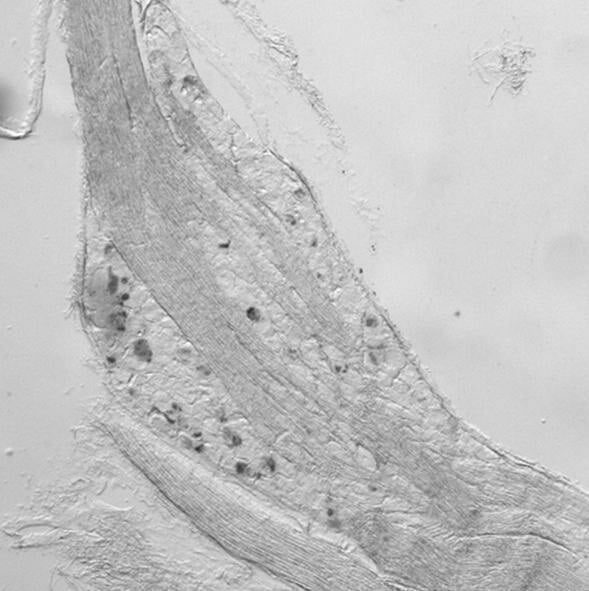Equine infectious anaemia virus (EIAV)-based lentiviral can transduce CNS neurones (Mazarakis et al., 2001). Our study compares the pattern and efficacy of transduction in the dorsal root ganglion (DRG) by EIAV vectors pseudotyped with either the rabies-G glycoprotein (rabies-G) or vesicular stomatitis virus glycoprotein (VSV-G), following different routes of administration. Adult male Wistar rats and C57BL/6 mice were anaesthetized with Medetomidine (0.25 and 0.5 mg/kg, respectively, i.p.) and ketamine (60 and 75 mg/kg, respectively, i.p.). With sterile precautions an EIAV vector expressing β-galactosidase (titre 4-8 x 108 T.U. /ml) was infused slowly via a micropipette into the spinal cord, DRG, sciatic nerve or footpad. Animals were anaesthetized and perfused with 4 % paraformaldehyde at various times later. Expression of β-galactosidase was determined by incubating 20 μm cryostat tissue sections with either X-gal staining solution (1 mg/ml X-gal in 0.1 M phosphate buffer containing 1.3 mM MgCl2, 3 mM K3Fe(CN)6, 3 mM K4Fe(CN)6) overnight at 37°C or rabbit anti-β-galactosidase (1:300, Europa Labs) followed by Alexa Fluor 488 (1:1000, Molecular Probes). Intraspinal injections (2 μl/rat and 1 μl/mouse) of both VSV-G and rabies-G EIAV vectors produced abundant transduction within the cord at 3 and 5 weeks respectively (n=3) (Figure A). The rabies-G vector also transduced approximately 40 % of DRG neurons in the treated segment compared to < 5 % using the VSV-G vector (Figure B). Roughly equal numbers of NF200, CGRP and IB4 positive cells were transduced in DRG. Direct DRG injection (2 x 0.5 μl) or peripheral sciatic nerve or footpad injections (6-10 μl) (n = 3 each, 4 week survival) transduced fewer DRG neurones but by all routes transduction was better using rabies-G pseudotyped EIAV vector. This study demonstrates that the pattern and efficacy of neuronal transduction in the DRG is dependent on the pseudotype of the lentiviral vector as well as the route of injection. For retrograde expression of the EIAV vector in the DRG the rabies-G EIAV vector was more efficient while expression at the site of injection was more effective using the VSV-G pseudotyped EIAV vector. These pseudotyped lentiviral vectors can be used to manipulate experimentally gene expression of sensory neurones in the DRG.
King's College London (2005) J Physiol 565P, C119
Communications: Comparison of pattern and efficacy of neuronal transduction in the dorsal root ganglia by lentiviral pseudotypes in vivo
Yip, Ping K; Wong, Liang-Fong ; Grist, John ; Kingsman, Susan M; Mazarakis, Nicholas D; McMahon, Stephen B;
1. Neurorestoration Group, King's College London, London, United Kingdom. 2. Oxford BioMedica (UK) Ltd, Oxford, United Kingdom.
View other abstracts by:
Figure A. Expression of beta-galactosidase using X-gal staining in adult rat spinal cord using VSV-G EIAV vector at 3 week post injection.
Figure B. Expression of beta-galactosidase using X-gal staining in adult dorsal root ganglion using rabies-G EIAV vector at 5 week post injection.
Where applicable, experiments conform with Society ethical requirements.


